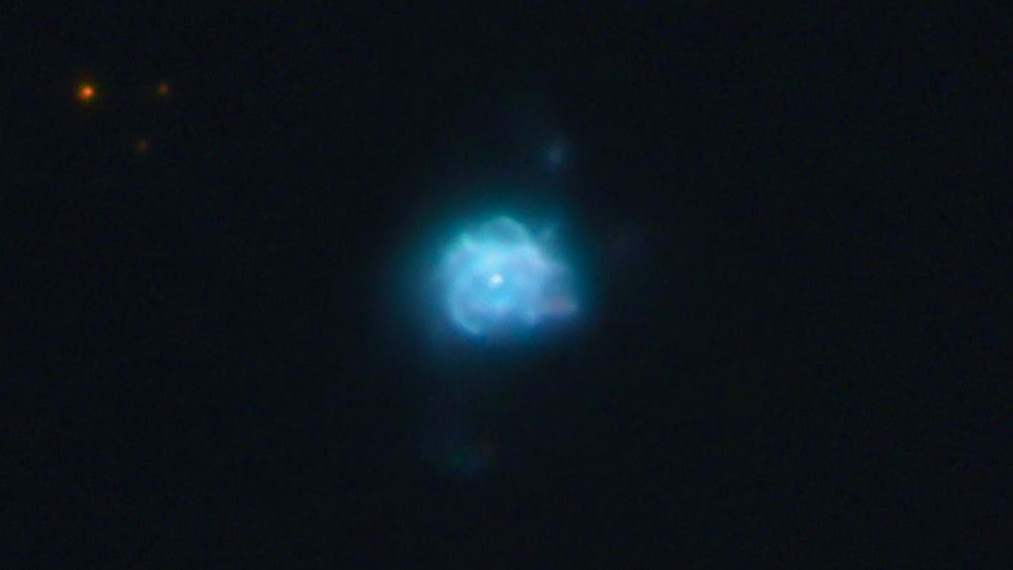NGC 6210, the turtle
The small, bright planetary nebula NGC 6210 in Hercules is young, reveals structures and even a bright blue-green colour!
 The planetary nebula NGC 6210 in the constellation of Hercules captured with a 9.25 inch Celestron with a 2× teleconverter. Carsten Dosche
The planetary nebula NGC 6210 in the constellation of Hercules captured with a 9.25 inch Celestron with a 2× teleconverter. Carsten Dosche Drawing of NGC 6210 taken with a 66-cm Newtonian telescope at 837 times magnification. Uwe Glahn
Drawing of NGC 6210 taken with a 66-cm Newtonian telescope at 837 times magnification. Uwe GlahnNGC 6210 is a very small (0.3'×0.3') but fairly bright (mag. 8.8) planetary nebula in the constellation of Hercules. It was discovered in 1825 by the German astronomer Friedrich Georg Wilhelm Struve. Its distance is estimated to be about 6,200 light-years, and is around 0.5 light-years across. At about 2,000 years of age, it is a rather young planetary nebula. It contains a wide range of shell structures and jets. Telescopes show a blue-green colour, due to the high surface brightness of the nebula. High magnifications are therefore ideal. To find it, from β Herculis pan your binoculars or telescope 4° in a north-easterly direction. The nebula is located close to three bright stars that are useful for identification.
Bright blue-green
 NGC 6210 in an image from the
Hubble space telescope. ESA/Hubble and NASA
NGC 6210 in an image from the
Hubble space telescope. ESA/Hubble and NASAEven with binoculars you should be able to make out the nebula as a faint magnitude 9 star. In telescopes with an aperture of 10 cm and magnification of less than 50 times, the star-like object takes on a bright, blue-green colour. At 80 to 100 times magnification, a diffuse, irregularly-shaped, amorphous blue-green disc appears.
From around 12 cm aperture and 250-times magnification, a brighter centre with a ring-like, ridged shape with diffuse edges is revealed. Using a telescope with a 30-cm or greater aperture and with good conditions, it should be possible to see the central star. Even larger telescopes from an aperture of 40 cm will also reveal two faint jets at the ends of the nebula.
Floating turtle
The ejected gas clouds shine intensely bluish-green due to the dominant spectral lines of the singly (blue) and doubly (green) ionised oxygen. High-resolution images from the Hubble Space Telescope show the central star and how it emits four jets of very hot gas into the older and thus cooler gas layer. As the nebula is oval and the four jets protrude like little feet from the gas shell, the nebula looks like a floating turtle. This gave rise to its nickname the Turtle in Space Nebula.
 Finding chart of NGC 6210 in the constellation of Hercules. J. Scholten
Finding chart of NGC 6210 in the constellation of Hercules. J. ScholtenAuthor: Michael Feiler / Licence: Oculum-Verlag GmbH
